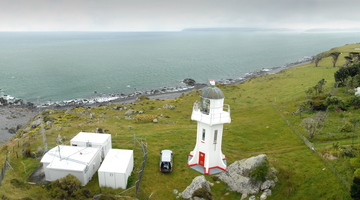Dr Sara Mikaloff-Fletcher, an atmospheric modeller at NIWA, explains how the level of carbon dioxide in the atmosphere has been rising in recent times. She outlines some of the sources for this carbon dioxide. This includes about 9 petagrams of carbon per year (8.7 PgC in 2008) from fossil fuel burning and cement production. 1 petagram is 1 billion tonnes.
Updates: The American Meteorological Society’s State of the Climate in 2017 reports that in 2017, the ocean absorbed a net 2.6 billion tonnes (petagrams) of carbon from human activities, which is 36% higher than the 2005-2015 average of 1.9 billion tonnes. The National Oceanic and Atmospheric Administration notes that May 2021 CO2 levels are above 418 ppm (measured at Mauna Loa Observatory in Hawaii.)
Transcript
DR SARA MIKALOFF-FLETCHER
The exchange of carbon between the ocean and the atmosphere is currently quite far out of balance. The contribution of fossil fuels, cement production, and land use change to atmosphere CO2 has raised the atmosphere concentration from about 270 parts per million in preindustrial times, to 385 parts per million as of 2008.
We are emitting about 9 petagrams of carbon per year to the atmosphere through fossil fuels. Scientists like to talk about carbon in terms of petagrams of carbon per year. To you and me, that petagram of carbon per year is a billion metric tonnes of carbon per year.
So from fossil fuels, we are emitting about 9 petagrams of carbon per year, and then a very small percentage of that, about 5%, is actually from cement production, and then we are also emitting carbon to the atmosphere through land use change, and biomass burning.
And then about 2 petagrams of carbon per year is taken up by the ocean, and about one and a half is taken up by plants on land, by the terrestrial biosphere. If you take the amount of fossil fuels that have been burned, you compare that with how much CO2 is actually in the atmosphere, which is extremely well measured, you can see that the natural environment is actually taking up about half of all the CO2 that we are producing.


